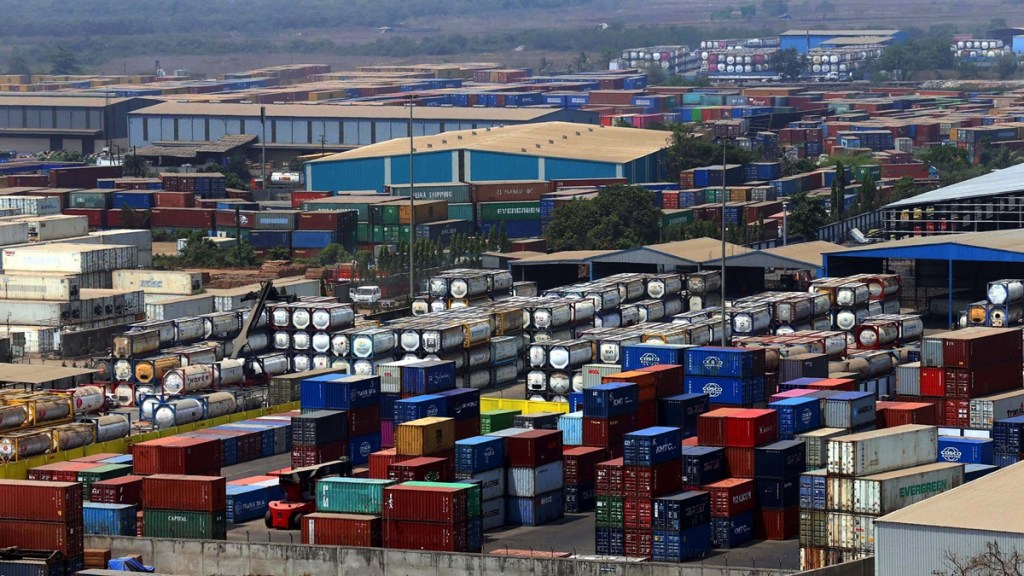The US and the UK have clinched a limited trade deal focused on quick wins rather than a comprehensive agreement. That could set the template for trade deals that India and many others are trying to conclude with the US in the wake of the reciprocal tariffs imposed by it, writes Banasree Purkayastha
Contours of the US-UK deal
US President Donald Trump and British Prime Minister Keir Starmer last Thursday announced a limited trade deal which maintains Washington’s 10% tariffs on most British exports, but reduces or removes tariffs on some of the UK’s key exports. The deal will cut tariffs on up to 100,000 British cars from 27.5% to 10%, and eliminate tariffs on steel and aluminum. “This is a deal that will protect British businesses and save thousands of jobs in Britain, really important, skilled, well paid jobs,” said Starmer. The White House said it would impose a quota on the “most favoured nation rates for UK steel and aluminium and certain derivative steel and aluminium products.” Though the UK exports only about £700 million worth of steel and aluminium to the US, the tariffs also cover products made with steel and aluminium.
The UK has said the limited deal to protect cars and steel is just a start, and both sides agreed to strike a deal that would improve access for the worst-hit sectors. “Because we haven’t got that full agreement in place, being able to have this announcement on the sectoral side is obviously of crucial importance,” UK’s business minister Jonathan Reynolds told the media.
UK’s auto sector big winner
Most importantly, the US has cut import duties to 10% for a maximum of 100,000 UK cars, the number of cars the UK exported last year. Any cars exported above that 100,000 will be subject to a 27.5% import tax. Trump had earlier placed import taxes of 25% on cars and car parts coming into the US on top of the existing 2.5%. Cars are the UK’s biggest export to the US — worth about £9 billion last year. No wonder, Starmer chose a Tata Motors-owned Jaguar Land Rover (JLR) factory in northern England to announce the trade deal. Rolls Royce engines and plane parts can also now be exported from the UK to the US tariff-free.
However, as per a BBC report, car industry leaders apprehend that the 100,000-car quota could effectively put a ceiling on the number they can export competitively.
Concessions from the UK side
In return, the deal lowers average UK tariffs on US goods to 1.8% from 5.1% and establishes a new reciprocal market on beef but “without altering its food standards”, said the UK government. Consumers in the UK have not shown much fondness for American meat products due to apprehensions regarding how these are processed and packaged. US beef exports to the UK had been slapped with a 20% tariff within a quota of 1,000 metric tonne (MT). The UK has now scrapped this tariff and raised the quota to 13,000 MT. In return, the UK has been given a tariff-free quota for 13,000 MT of exports, which its trade ministers said was the “first time” British farmers had been given this kind of deal. However, UK National Farmers’ Union president Tom Bradshaw was quoted in the Financial Times as saying: “Our biggest concern is that . . . agricultural sectors have been singled out to shoulder the heavy burden of the removal of tariffs for other industries in the economy.” UK has also removed the tariff on ethanol.
Many loose ends remain
The BBC pointed out that though Trump had declared on social media this announcement was a “major trade deal”, it’s not. He does not have the authority to sign the type of free-trade agreement India and the UK finalised earlier last week; that power lies with Congress and this would take longer than the 90-day pause in place. The scope of the US-UK deal is limited, and it still leaves the UK facing a tougher trading relationship with the US than before Trump introduced global tariffs last month, FT said. The two sides will continue to negotiate on a deal to eliminate the 10% baseline tariff though the UK was not a target of these higher tariffs, as the US already has a trade surplus with the UK.
“The impact of all this development on the trade front on the UK outlook is conditional not only on the UK trade agreement but also what the rest of the world agrees as well,” Andrew Bailey, governor of the Bank of England, has said, even as he welcomed the deal as “good news”.
Focus on bilateral agreements
Following Trump’s sweeping reciprocal tariffs earlier this year, many countries are scrambling to finalise bilateral trade agreements (BTA) with the US to secure some tariff concessions and “early mutual wins”. A crucial meeting between top US officials and a Chinese delegation to de-escalate the trade wars took off in Switzerland on Saturday. India is already negotiating with the US for a bilateral trade agreement and hopes to conclude a preliminary set agreement by the first half of FY26. New Delhi and London signed a free trade agreement (FTA) earlier last week. That agreement is expected to double bilateral trade within five years from the current $60 billion. Trump’s reciprocal tariffs have, in a way, made multilateral agreements less relevant. India is currently negotiating for about 10 FTAs and BTAs with various trading partners.
